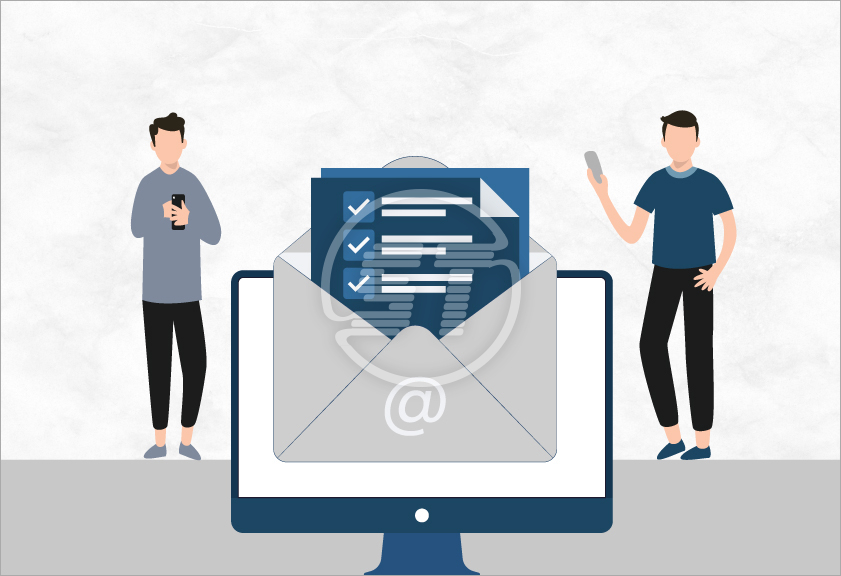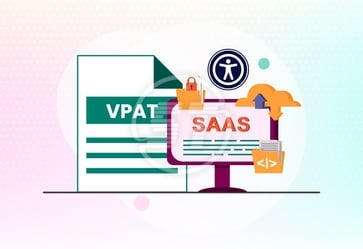Businesses need robust tools to make their communication effectively accessible for their users. Emails are one of the crucial mediums of communication and marketing and thus, they ought to be accessible. However, organizations mostly focus on click-through strategies and forget about emails subject lines and main content.
Email accessibility is nothing but ensuring that users can access the content in its original context. It is even a legal requirement for businesses to prioritize email accessibility.
Let’s dive into a practical checklist that helps make those emails inclusive and user-friendly for all.
Email accessibility checklist: An essential to keep and follow!
- Use semantic and logical structure
- Use proper heading tags (H1, H2, H3) to create a logical reading order.
- Stick to a single-column layout whenever possible to improve screen reader navigation.
- Ensure reading order flows top-to-bottom, left-to-right in the code as well as design. Each email should start with a heading that defines its purpose, followed by logically grouped content.
- Avoid using <div> or <span> for structure unless necessary – they are not meaningful to assistive technologies.
It matters because screen readers rely on structure to help users navigate through content efficiently.
- Write descriptive subject lines and preheaders
- Avoid vague or clickbait phrases.
- Ensure the subject line accurately reflects the content. Be descriptive and specific in subject lines.
- Add a preheader that provides context or a summary.
- Avoid using emojis or many symbols in subject lines – they may not be interpreted correctly by screen readers.
Tip: Think of subject lines as headlines and preheaders as subheadings.
- Use accessible fonts and formatting
- Choose fonts that are readable, non-decorative, and sans-serif fonts like Arial, Verdana, or Helvetica.
- Maintain a minimum font size of 14px for body text.
- Avoid justified text which can cause uneven spacing; opt for left-aligned text instead.
- Avoid using all caps for large chunks of text – it’s harder to read and interpret via screen readers.
Tip: Avoid using bitmap fonts in images. They don’t scale well on high-resolution screens and aren’t screen-reader-friendly.
- Maintain sufficient color contrast
- Ensure a minimum contrast ratio of 4.5:1 between text and background (18 px + or bold 14 px+).
- Use online tools like WebAIM’s Contrast Checker to test the color choices.
- Never rely on color alone to convey information. Use labels, patterns, or icons for added clarity.
- Avoid red-green combinations for users with color blindness.
- Add alt text to images
- All images, including logos and graphics, must include meaningful alt text.
- Decorative images should have empty alt attributes (alt=””) so screen readers can skip them.
- Avoid using text within images. If unavoidable, repeat the text in the alt description.
Important: Avoid using images of text unless necessary – real text is always better for accessibility and responsiveness.
- Ensure link accessibility
- Use descriptive link text (e.g., “Download the accessibility guide” instead of “Click here”).
- Avoid tiny link targets; make sure clickable areas are large enough for users with motor impairments.
- Underline hyperlinks and use a color with sufficient contrast from the body text.
Pro tip: Group links with list markup (<ul><li>) when presenting multiple navigation options.
- Design accessible buttons and CTAs
- Buttons should have clear, action-oriented labels (e.g., “Register Now”).
- Sufficient color contrast between button text and background.
- Adequate padding and spacing to ensure buttons are easily clickable.
- Keyboard focus indicators for interactive accessibility.
Use semantic button (<button>) where possible instead of styles <div> s or <a> tags.
- Make emails keyboard and screen reader-friendly
- All interactive elements (links, forms, buttons) should be accessible via the keyboard (Tab, Shift+Tab, Enter, and Space).
- Test with screen readers like NVDA, JAWS, or VoiceOver to ensure a logical flow.
- Avoid auto-playing media or flashing content that can trigger seizures or overwhelm users.
- Provide a plain-text version
- Always include a plain text alternative to the HTML email. Include the full content or a meaningful summary.
- Avoid empty or token plain-text content.
- This ensures users with basic devices or assistive technologies can still access the content.
Why it matters: Many email clients (and screen readers) may prefer or default to plain text.
- Test emails before sending
- Use accessibility tools such as:
1. Litmus or Email on Acid for visual testing across clients.
2. Free Accessibility Checker, WAVE or axe DevTools for accessibility checks
3. Manual screen reader testing to stimulate real user experience.
- Don’t forget to check mobile accessibility – many users open emails on smartphones and tablets.
Also read: Top Trends of Digital Marketing 2025
- Use accessibility tools such as:
In a nutshell,
Inclusive email design is no longer optional – it’s a necessity. By following this accessibility checklist, businesses create digital communications that are welcoming, respectful, and usable by all people, including those with visual, auditory, cognitive, or motor impairments.
Accessibility isn’t just about compliance; it’s about empathy and reach. When they make their emails accessible, it helps widen the audience and strengthen the brand’s commitment to inclusive digital communication.
Bonus Tip: Include a visible “Accessibility Feedback” link in the email footer so users can report issues or suggest improvements – showing that their organization truly values inclusion. Also, offer a language toggle or localized versions of emails for diverse readers.
At Skynet Technologies, we believe digital communications should be inclusive and accessible to all. Use this must-follow email accessibility checklist to improve readability, navigation, and user experience for people of all abilities. Whether you're reaching out to customers, partners, or prospects, accessible emails help to foster stronger relationships and demonstrate a commitment to digital inclusivity. We provide comprehensive digital accessibility services to help businesses build inclusive experiences across websites, documents, and digital communications. Hire our accessibility consultants to learn how we can support email accessibility strategy as part of a complete, compliance-ready solution. Reach out hello@skynettechnologies.com for more information.


